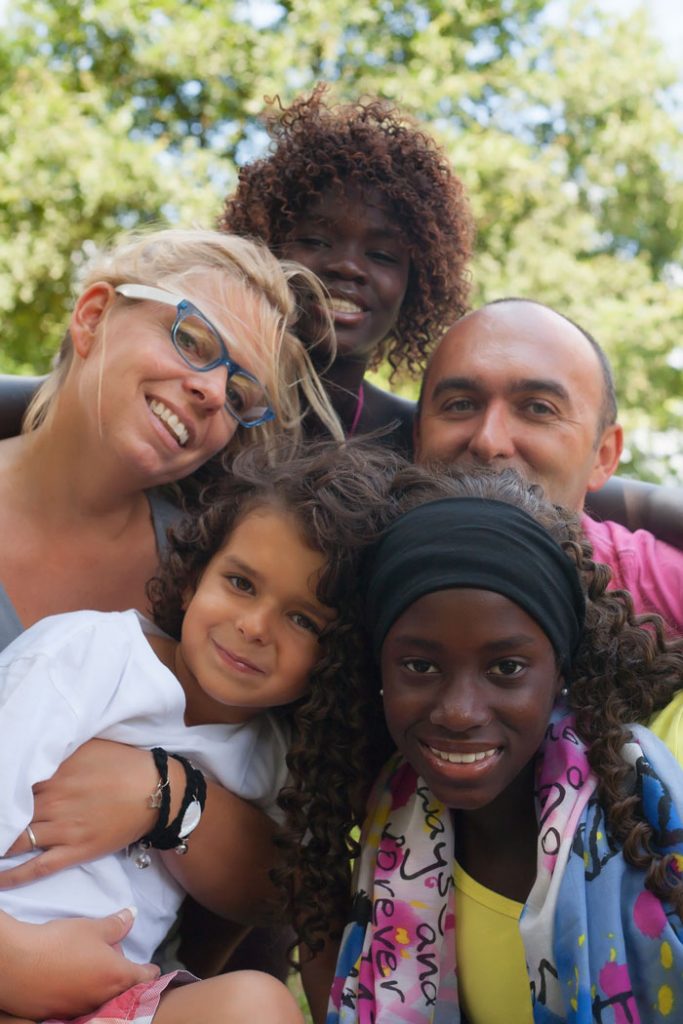
In honor of May being Foster Care Awareness Month, One Family Illinois would like to take a look back at the history of children in foster care – why it started, where it all began, and how we’ve transitioned to a more effective, supportive model of care.
Navigating the Protection of Youth Before Child Welfare Services Came to Be
The first real initiative in the United States towards what we now know today as foster care began with Charles Loring Brace in 1854.
Influenced by the harsh living conditions he witnessed while performing charitable work in New York City, Brace founded the Children’s Aid Society (CAS) where he took in orphans (including children with only one living parent) and the children of parents who were convinced by the CAS to relinquish them. He then transported those children via “orphan trains” to small towns and rural areas where families would come forward, claim the children, and raise them.
Orphanages and the Child Saving Movement Take Over Chicago
By the mid 19th century, the “Child Saving Movement” came into play. This movement took a deeper, more concerned look at the welfare of children and the impacts of leaving youth in homes where they could not thrive.
The first orphanage opened in Chicago in 1849 after a massive cholera epidemic, and by 1910, there were more than 30 orphanages operating in the city.
Most of these orphanages housed anywhere between 200-900 children at a time.
Orphanages weren’t just for the parentless, either. Children from single-parent homes often found themselves in an orphanage because it offered the parent a safe place to keep their children in the midst of a financial crisis.
In fact, nearly all children in Chicago orphanages had one parent still living.
In 1874, the Societies for Prevention of Cruelty to Children was established in an effort to better act as a protective agency for youth in unfit homes. However, most of the early SPCCs made no effort to rehabilitate biological parents. Instead, the societies simply placed the children into foster care, group homes, or orphanages.
Jane Addams Fights For Our Youth
Founder of Chicago’s Hull-House, Jane Addams was a progressive reformer in the late 1800s and early to mid 1900s that believed children should be kept in home environments.
Jane fought relentlessly for a family-based model of care, and between 1900 and 1940, the Chicago area orphanages started responding.
Orphanages began moving out of the city’s epi-center, and their huge dormitories transitioned to smaller “cottages” in an effort to simulate a home setting. Those that remained in the heart of Chicago became foster home placement centers instead.
In the early 1970s, the Illinois Department of Children and Family Services closed nearly every orphanage as they saw the true benefit of providing a home-like environment and familial support to children in foster care.
The U.S. Children’s Bureau Is Founded
Thanks to the wonderful dedication and movement of those championing for our youth during the Progressive Era, the very first White House conference on the Care of Dependent Children was held in 1909.
It was during this conference that members concluded that “home life is the highest and finest product of civilization”, and they recommended that children be placed with families rather than institutions if they must be removed from their homes.
In 1912, The U.S. Children’s Bureau was founded as the first ever department of the federal government dedicated to the welfare of children. This bureau still acts today as the implementation of federal child welfare initiatives.
Hull-House Lays the Foundation for a New Standard
Child welfare services in the United States emerged out of public concern for protecting children and placing them with families rather than institutions, thanks in part to progressives like Jane Addams.
In 1889, Addams founded Hull-House, the first social settlement in Chicago that housed diverse communities where inhabitants gathered to learn and gain the tools they needed to put down roots.
Hull-House consisted of thirteen buildings where the community gained access to education, social spaces, and cultural enrichment. It became a safe haven for all who lived there.
A New Model of Care Emerges
The example that Jane Addams provided from the community establishment and mentality of Hull-House offered a unique perspective to how the lives of youth could be changed for the better based on their surroundings. As the years have gone by, language, practices, and organizations have progressed to better care for the needs of children with sensitivity, compassion, and inclusion. One Family Illinois stands proud with advocates like Addams and the community built at Hull-House and is energized to continue the work moving forward.
Not unlike Hull-House, our model of care focuses on the importance and significance of keeping families together and providing children in foster care with a solid family and community full of support, love, and guidance.
Every child at One Family Illinois benefits from our model of care not only while they live in one of our Villages but far into adulthood. We have dedicated Foster Parents who provide full-time, loving care to up to six children at a time. Our support staff mentor, guide, and assist our youth so that they can heal, regain trust, and move forward toward their bright futures. And our focus on keeping siblings together is a testament to our deepest desire – family stability and unification.
One Family Illinois continues to move forward in innovative ways that prove vastly more effective than the traditional model of foster care so that we may provide our youth with everything they need – physically, spiritually, and mentally – to become successful, empowered adults. Together with your help, we are building the future of foster care for children in Illinois and beyond.